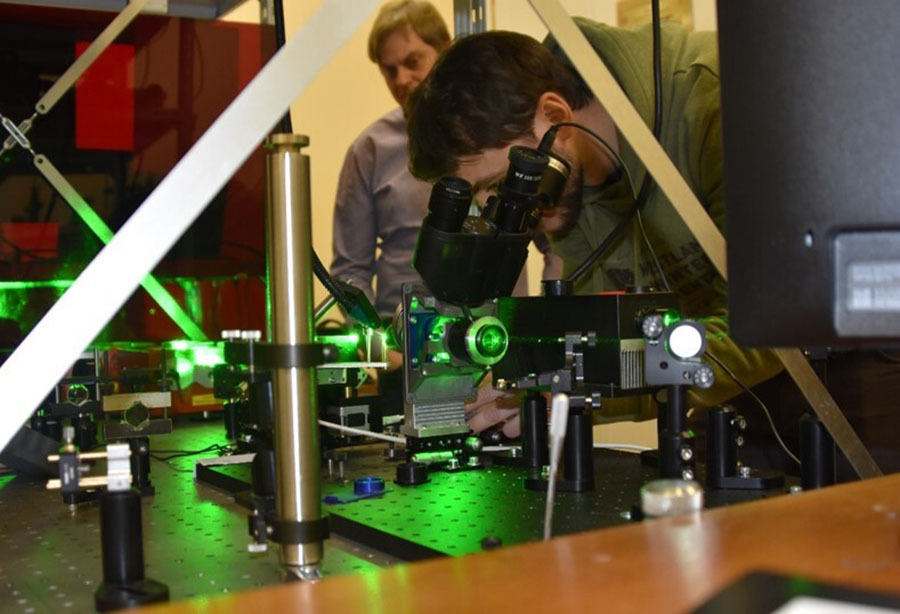Russian scientists have developed a fundamentally new technology for marking diamonds, which makes it possible to track the entire history of a stone - from a mining quarry to an end customer.
This, according to experts, will protect the interests of consumers, as well as reduce the volume of counterfeits.
The authors of the technology are a group of scientists from the P. N. Lebedev Physical Institute of the Russian Academy of Sciences (FIAN), who, within the framework of a joint project, collaborated with the diamond mining enterprise PJSC ALROSA and an industrial partner, the Mikrolaser company.
One of the fundamental aspects of the research was supported by a grant from the Presidential Program of the Russian Science Foundation (RSF) and published in the journal Applied Surface Science.
Installation
© Sergey Kudryashov
Various methods are used to mark natural diamonds today.
For example, a microsignature is applied to the surface of a stone - as a rule, it is placed on a girdle - a "girdle" that protects the gem from chipping.
However, this engraving is not difficult to counterfeit.
In addition, the technique of microscopic laser marks in the thickness of the diamond is used.
They cannot be seen with the naked eye, but nevertheless these points irreversibly degrade the quality of the crystal, the press service of the Russian Science Foundation notes.
As for the new technology developed by scientists from the Lebedev Physical Institute, here we are talking about the application of volumetric photoluminescent micrometres invisible in daylight even at high magnification.
They arise as a result of the action of laser pulses on special atomic defects of the crystal - optical centers in which nitrogen atoms are located and which in some cases impart color to the stone. Such marks can only be seen under special lighting. Depending on the characteristics of the irradiation, a unique pattern can be formed and a barcode or QR code can be applied to the stone. This makes it possible to identify each diamond and trace its entire history - information about each stone will be stored and updated in the digital cloud.
“Unlike micro-marks on the surface of diamonds, volumetric photoluminescent marks are a more reliable and durable carrier of information, which is very important for the legal circulation of diamonds and protection of trademarks,” said Sergei Kudryashov, head of the RSF grant project, Leading Researcher and Head of the Laser Laboratory. nanophysics and biomedicine FIAN.
Such developments have become very relevant in recent years due to the fact that the diamond market has been flooded with synthetic analogues of natural gemstones.
Modern technologies make it possible to synthesize diamonds, which are practically indistinguishable from crystals mined from the depths.
The difference can be revealed only during a full-fledged gemological examination.
This is often used by unscrupulous sellers who pass off synthetic diamonds as natural.
Installation
© Sergey Kudryashov
Back in 2019, the Ministry of Finance of Russia drew attention to this problem.
As Deputy Finance Minister Alexei Moiseyev noted in an interview with RIA Novosti, illegal "synthetics" accounted for about 20% of all diamonds sold.
At the same time, it is very difficult to distinguish artificial diamonds, since there are no unambiguous criteria for this.
“The only way to ensure that you have natural stone is to trace every step of the stone from the mine to the jewelry store,” Moiseev said.

